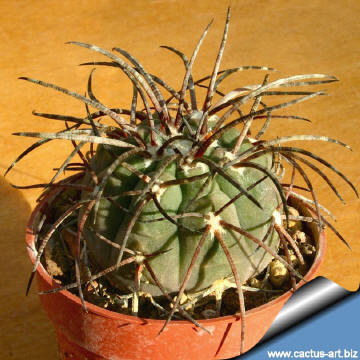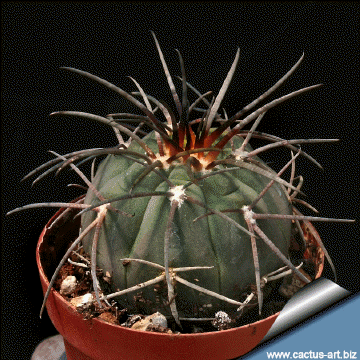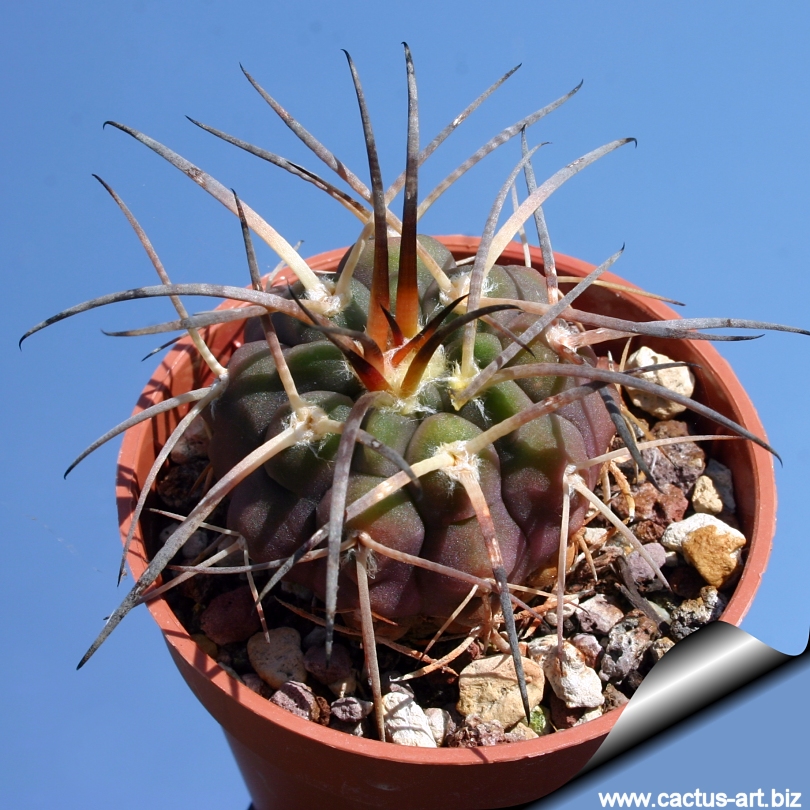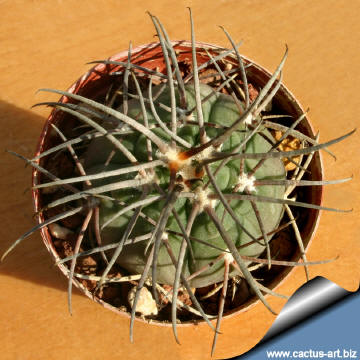-
x
Description


|
This plant is an extreme form of G. spegazzinii.It is an "European" variety selected originally from plants with open cluster of long and strong spines. This plants was at first multiplied asexually or by controlled pollination. Family: Cactaceae (Cactus Family) Gymnocalycium spegazzinii var. major Backbg. nomen nudum Scientific name: Gymnocalycium spegazzinii Britton & Rose Origin: Garden origin (Nursery selected form) Conservation status: Listed in CITES appendix 2.
|
|
|
Description: This plant is an extreme form of this very variable rich in forms species, but it is not justified the attribution of the rank of variety. |
|
 |
 |
|
Propagation: Seeds (seldom produces offsets) |
|




